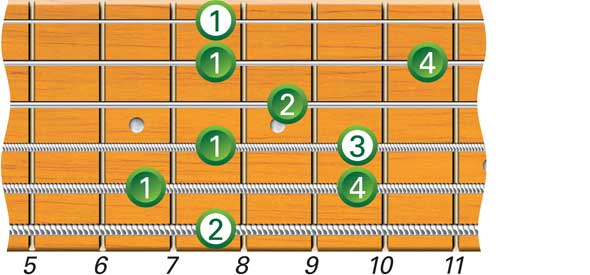
Dominant Seventh Arpeggios
One of the most common types of chord used in Blues is the seventh chord, (often called the dominant seventh chord). Seventh chords consist of four notes taken from the major scale of the same letter name. These notes are the 1st (1), 3rd (3), 5th (5) and flattened 7th ( b7) notes of the major scale, so the chord formula for the seventh chord is:

The flattened 7th note in this arpeggio is the same b7 note that is found in the Blues scale. Notice that the seventh chord is simply a major chord with a flattened 7th note added. Shown below is a C7 arpeggio.

Here is a lick which is based on the above C7 arpeggio which is played within the A form. Like scales, there are five basic forms of each arpeggio type which cover the whole fretboard when linked together. The five forms of the C7 arpeggio are shown on the following page.

Shown below are the five forms of a C7 arpeggio. Learn each one from memory and sing the degrees as you play the notes.
E Form (Pattern One)

D Form (Pattern Two)

C Form (Pattern Three)

A Form (Pattern Four)

G Form (Pattern Five)
